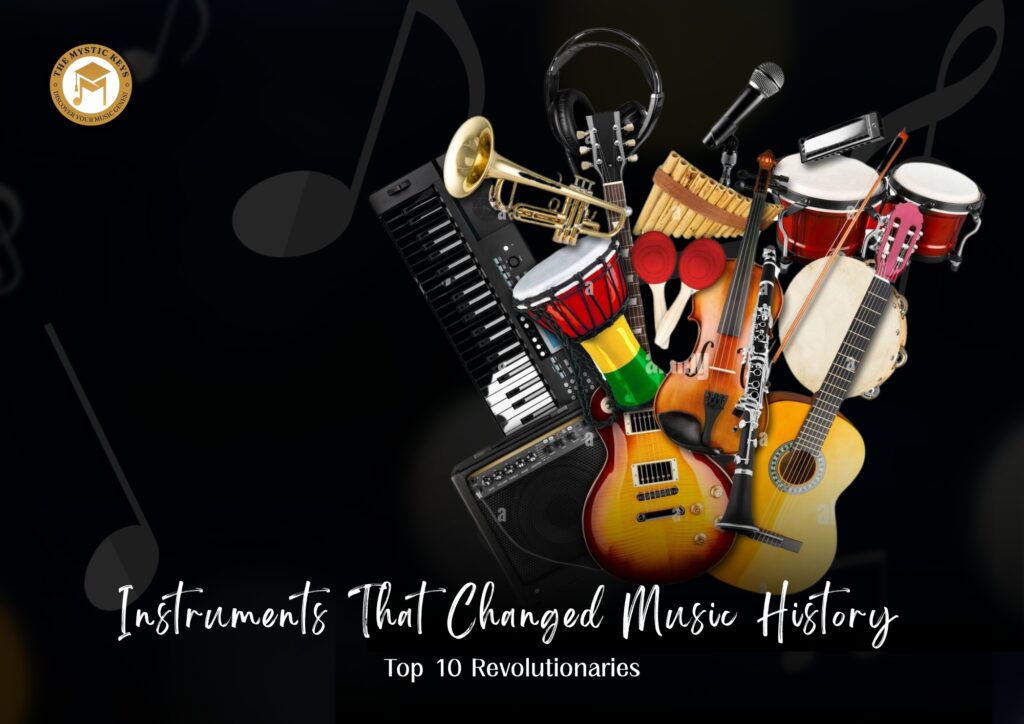
Instruments That Changed Music History | Top 10 Revolutionaries
Instruments That Changed Music History | Top 10 Revolutionaries
Music is often called the universal language — a form of expression that transcends boundaries of culture, language, and time. Throughout history, countless instruments have contributed to the vast diversity of sounds that define our musical world. Yet, among this vast array, a select few stand out as instruments that changed music history through their transformative impact. These instruments not only introduced new tones and textures but also inspired entire genres, reshaped cultural identities, and spurred technological innovation.
In this blog, we will take a deep dive into the top 10 instruments that changed the sound of the world, exploring their origins, the waves of change they created, and why they remain pivotal in shaping music today. Whether you are a musician, a history lover, or simply curious about how music evolved, this journey through time will offer you rich insights and appreciation for these legendary instruments.
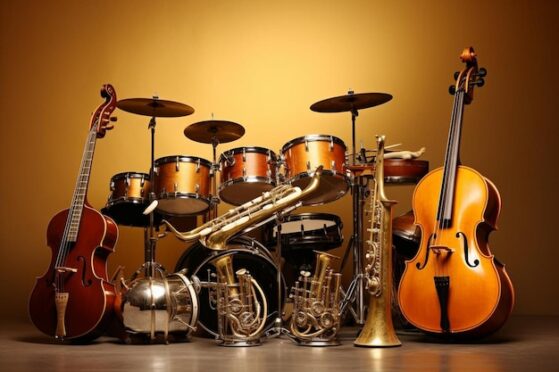
The Piano | The Instrument That Revolutionized Expression
To begin our journey, we must highlight the piano — arguably one of the most influential instruments in Western music history. Invented by Bartolomeo Cristofori in early 18th-century Italy, the piano marked a turning point because it combined the stringed instrument’s harmonic richness with the dynamic capabilities of percussion.
Before the piano, keyboard instruments like the harpsichord produced sound with a plucking mechanism, which limited expressive control. The piano’s hammer-striking mechanism allowed musicians to vary the volume from soft to loud (piano to forte), unlocking an unprecedented range of emotion and nuance.
Consequently, the piano became the centerpiece of classical composition and performance. Luminaries such as Mozart, Beethoven, Chopin, and Liszt composed masterpieces that fully exploited the instrument’s expressive potential. Over time, the piano also migrated beyond classical music, deeply influencing jazz, blues, rock, and pop. Moreover, the piano’s clear visual layout and harmonic clarity made it an essential teaching tool, helping generations grasp musical theory and composition.
In essence, the piano did not simply add a new instrument to the musical landscape — it expanded the very language of music.

The Electric Guitar |The Voice of Modern Music
Moving forward in time, the electric guitar stands as a symbol of 20th-century musical innovation and cultural change. While the guitar itself dates back centuries, it was the invention of the electric guitar in the 1930s, pioneered by inventors like Les Paul, that revolutionized how the instrument was heard and played.
Unlike its acoustic predecessor, the electric guitar uses pickups to convert string vibrations into electronic signals, which can be amplified and modified. This technological leap gave musicians the power not only to be louder but also to experiment with distortion, sustain, and a variety of effects, crafting entirely new sonic textures.
The electric guitar became the cornerstone of rock and roll, a genre that defined generations and became an emblem of youthful rebellion. Beyond rock, it permeated blues, jazz, heavy metal, punk, and alternative music. The instrument’s versatility empowered guitarists to become virtuosic soloists and creative innovators.
Ultimately, the electric guitar didn’t just amplify sound — it amplified cultural voices and musical possibilities.

The Drum Kit | Centralizing Rhythm for a New Groove
Next, we come to the drum kit, an invention that consolidated various percussion instruments into a single setup, played by one musician. This innovation was crucial for the development of jazz, rock, and many contemporary genres.
Historically, percussion instruments existed separately — bass drums, snare drums, cymbals, and more were played by different players. The creation of the drum kit allowed a single drummer to produce complex, layered rhythms, effectively becoming the heartbeat of the band.
The drum kit’s influence cannot be overstated. It created the foundation for groove, tempo, and dynamic shifts, transforming rhythm from a background pulse to a driving, expressive force. Legendary drummers like Buddy Rich, John Bonham, and Max Roach pushed the boundaries of technique and creativity, showcasing the drum kit’s expressive potential.
Moreover, by incorporating African rhythmic traditions, the drum kit helped bridge cultural sounds and brought percussive complexity into mainstream Western music.
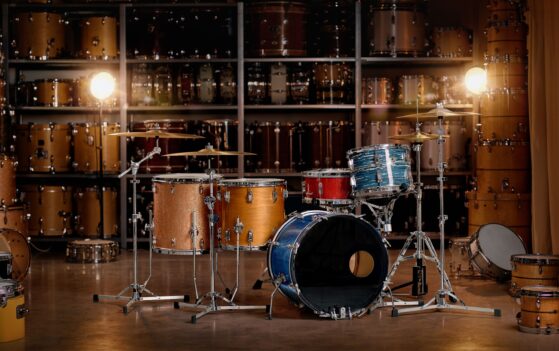
The Violin | The Voice of Emotional Intensity
Turning to a classical staple, the violin is celebrated for its unmatched expressiveness and agility. Emerging in the 16th century in Italy, the violin quickly became a dominant instrument in Western classical music and found its way into folk traditions worldwide.
The violin’s ability to mimic the human voice — from soaring highs to plaintive lows — made it an essential tool for composers and performers alike. It’s featured in the works of Baroque masters like Vivaldi and Bach, Classical geniuses like Mozart, and Romantic virtuosos such as Paganini.
Additionally, the violin has been adapted into countless folk traditions — Irish fiddling, American bluegrass, Indian classical music — underscoring its global reach. Its nimbleness and tonal range make it ideal for fast runs, complex harmonies, and deeply emotional melodies.
Through the violin, music gained a vehicle for profound emotional storytelling.
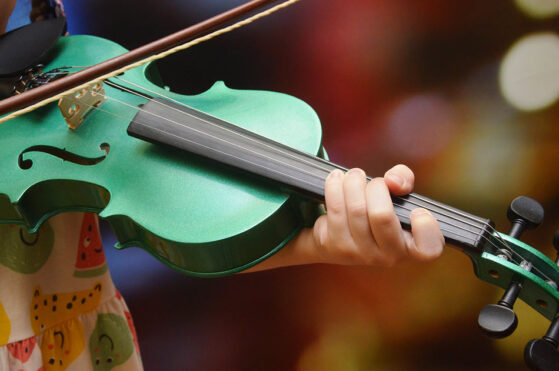
The Synthesizer | Pioneering New Electronic Realms
In the mid-20th century, the advent of the synthesizer marked a radical shift in music creation and sound design. Unlike traditional acoustic instruments, synthesizers generate sound electronically, allowing musicians to craft entirely new timbres and sonic textures.
Initially embraced by experimental and avant-garde composers, synthesizers soon found a home in mainstream music. The rise of electronic genres such as techno, house, synth-pop, and ambient music was inseparable from the synthesizer’s capabilities.
Furthermore, among the instruments that changed music history, synthesizers expanded beyond traditional music into film scoring, video game soundtracks, and advertising, becoming indispensable tools for sound design. They also democratized music production, enabling solo artists to create complex compositions without needing large ensembles.
In short, synthesizers broke the acoustic mold and opened limitless creative possibilities.
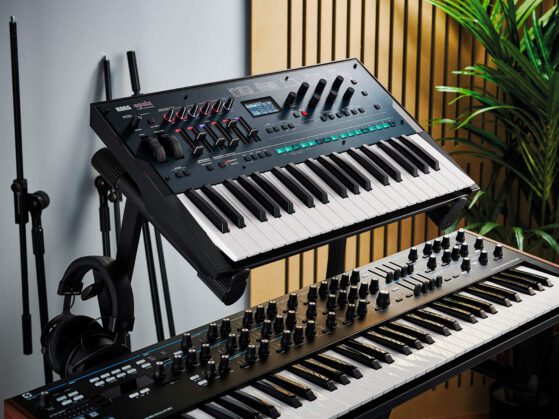
The Turntable | Transforming Playback into Performance
Though not a traditional instrument, the turntable changed how music is made and heard. Originally for playing vinyl, DJs learned to scratch, loop, and mix sounds live. This skill transformed records from playback devices into tools for creative expression. DJs could now manipulate sounds in real time, layering beats and rhythms to craft unique performances.
This sparked hip-hop, electronic dance, and remix culture. Pioneers like Kool Herc used it to create breakbeats that energized crowds and created new genres. The turntable became an instrument of innovation, allowing artists to experiment endlessly with sound. It also shifted the focus from just playing music to performing it live with personal flair.
The turntable changed the artist-audience connection, turning music playback into live creative performance. Today, it remains a vital part of DJ culture worldwide, inspiring new generations to push musical boundaries.
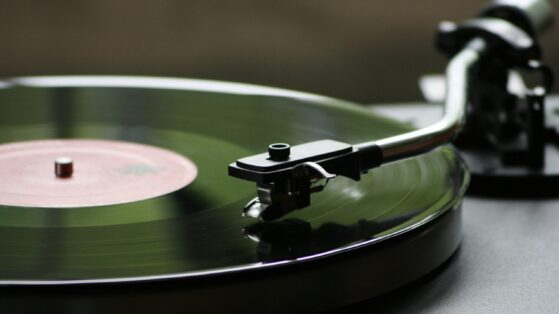
The Flute | An Ancient Voice Carrying Across Cultures
The flute is one of the oldest instruments, known for its pure and airy tone. From ancient bone flutes to today’s concert flutes, it has long been part of human culture.
Flutes have played key roles in rituals, stories, and music across the world — from Native American traditions to Indian ragas and European orchestras.
Its sound suits both soft melodies and fast runs. The flute connects breath and sound, making the music feel personal and close.
Over time, it became central to both solo and ensemble music. Its gentle tone blends easily with other instruments. Many composers use it to bring calm, mystery, or joy to their pieces. Today, the flute is heard in classical, folk, jazz, and even pop. Its timeless sound continues to move and inspire listeners everywhere.
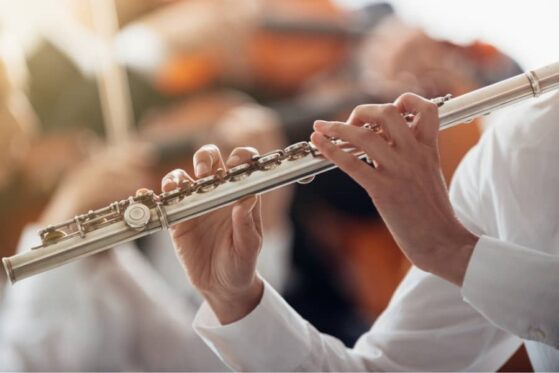
The Harmonica | Small Instrument, Big Impact
The harmonica, or “mouth organ,” is small but powerful. As one of the instruments that changed music history, its low cost and portability made it popular in blues, folk, and country. With bending notes and soulful wails, it expresses deep emotions and struggles. It later entered rock, pop, and even classical music. Easy to carry and rich in tone, it was loved by street performers and travelers. Its small size made spontaneous playing easy, while its sound added depth to many hits. Legends like Bob Dylan and Stevie Wonder made it world-famous.
It’s also a common first instrument for beginners due to its simplicity. Despite its size, it allows for impressive technique and emotional range. In jam sessions and solo acts, it brings raw, human expression. The harmonica adapts easily across styles and cultures. Simple yet soulful, it proves that even tiny instruments can shape music history.

The Tabla | Rhythmic Mastery from India
The tabla, a pair of hand-played drums from India, continues to captivate musicians worldwide with its intricate rhythms and expressive tones. Traditionally rooted in Hindustani classical music, the tabla plays a vital role in shaping the pulse and mood of a performance. With its beat cycles, or talas, musicians can explore endless improvisational possibilities, allowing each rendition to feel fresh and alive.
As musical boundaries began to blur, artists started incorporating the tabla into jazz, fusion, and world music. This seamless blending highlights the instrument’s adaptability and global appeal. Consequently, many Western musicians actively seek collaborations with tabla players to add rhythmic sophistication to their work. Even music conservatories around the world now include tabla in their percussion studies, acknowledging its growing relevance in cross-cultural education.
Through this expanding influence, the tabla not only preserves centuries of Indian tradition but also continues to shape and inspire the evolving language of global music.
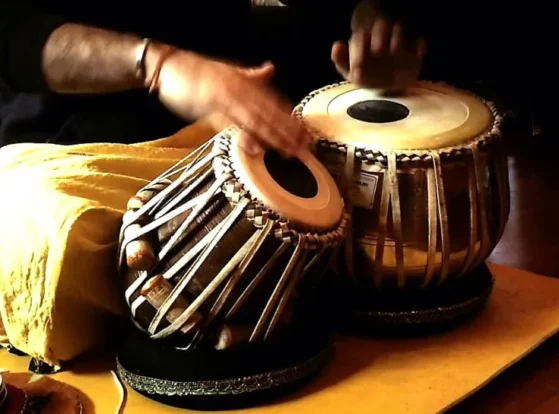
Conclusion | Instruments as Engines of Musical Transformation
These ten instruments that changed music history shaped the way we experience music. Each one opened new paths to express emotion, create fresh sounds, and unite cultures.
The piano speaks with emotion. The electric guitar roars with energy. The synthesizer pushes sound into the future, while the tabla weaves rhythm with precision. Musicians across generations have used them to break barriers and start new musical movements.
These instruments continue to inspire and challenge artists today. As music evolves, new instruments will rise — but these classics still guide the way.
At The Mystic Keys, we help you explore these powerful instruments and discover your own voice.
Join us and become part of the sound that shapes tomorrow.

